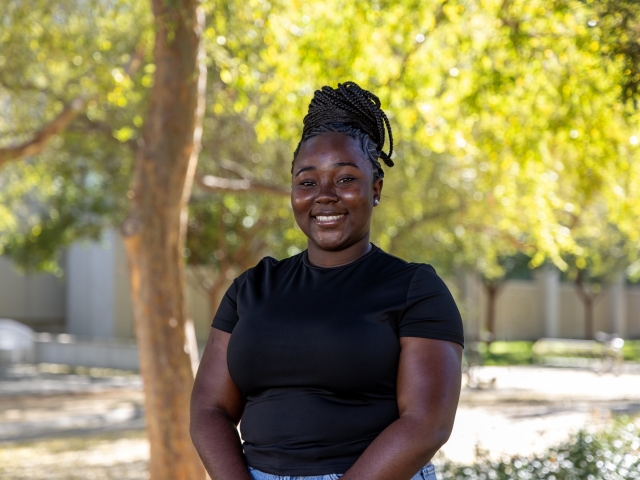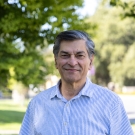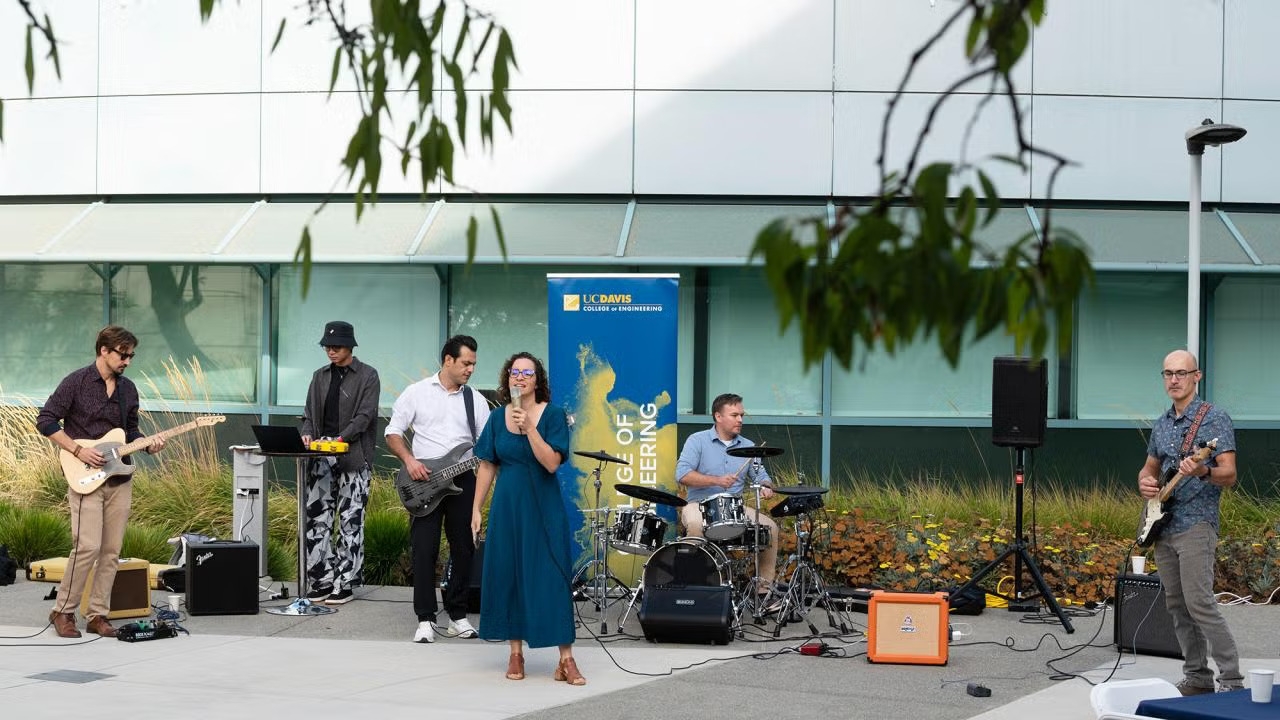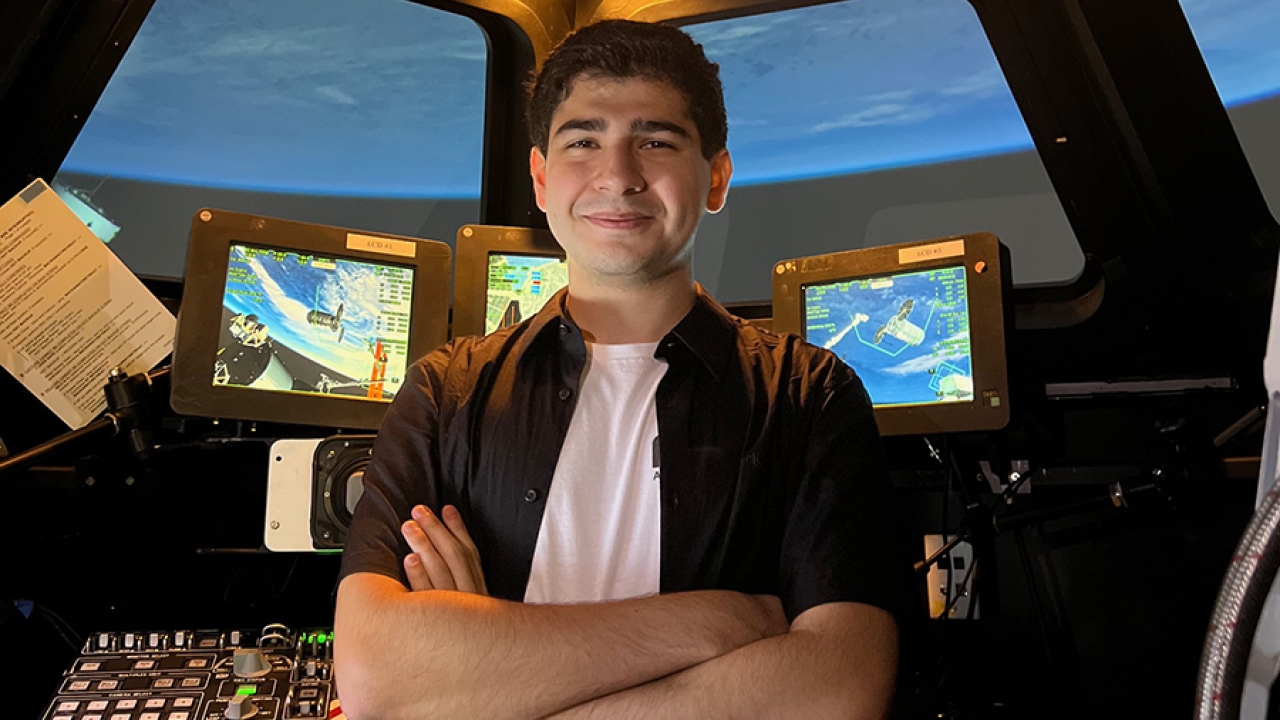
Blog: From Ghana to UC Davis, Bridging Global Gaps in Materials Science Research and Education
I’m Petrina Okrah. I’m currently pursuing my Master of Science degree in materials science and engineering at the University of California, Davis. I recently wrote a letter to the editor of the American Ceramic Society Bulletin to share how my journey as a materials science student shaped the way I think about ceramics education and research. My experiences, from Ghana to UC Davis, have shown me that curiosity exists everywhere, but resources do not, and bridging that gap is key to unlocking the full potential of future materials scientists.
Before coming to UC Davis, I completed my undergraduate studies in Ghana, where my materials science education emphasized metals and polymers far more than ceramics. The ceramics content was largely confined to classic examples like refractories, which are ceramics used for high-temperature purposes, such as lining furnaces and reactors. This narrow framing made it easy to overlook how ceramics underpin technologies that are central to modern life.
Theoretical understanding was abundant, but practical opportunities were limited. Laboratory facilities were often outdated, lacked specialized instruments or were unavailable for ceramics-specific experiments. This gap between theory and hands-on experience made it difficult to connect the principles we learned to real-world applications.
Despite these constraints, my classmates and I were deeply curious, eager to explore how materials behave, how microstructures form and how processing influences function. But curiosity alone couldn’t bridge the gap created by limited access to modern research tools.
Bridging the Science Education Divide
The contrast between my experiences in Ghana and at UC Davis reflects a broader truth about global education in materials science: access shapes possibility. The 2021 UNESCO Science Report notes that Africa contributes less than 2% of global scientific research output, a statistic that highlights not a lack of talent, but a lack of resources and collaboration. Outdated lab equipment, limited funding and barriers to international partnerships continue to restrict what many capable students can achieve.
Bridging this divide requires more than goodwill. It calls for intentional collaboration. Professional societies and academic institutions play a crucial role in creating opportunities that connect students, mentors and resources across borders. Programs that support virtual experimentation, shared instrumentation and global mentorship networks can help level the playing field. Initiatives like the U.S. Agency for International Development’s Partnerships for Enhanced Engagement in Research (PEER) have demonstrated how institutions can share expertise across continents to accelerate discovery and inclusion in science.
A New View of Ceramics
Coming to UC Davis to pursue my master’s degree marked a dramatic shift. Here, ceramic materials are not treated as a narrow specialty but as part of a larger, interdisciplinary ecosystem that connects sustainability, computation and design.
What once seemed like advanced, unreachable technologies, such as operating scanning electron and atomic force microscopes, are now everyday tools I use to test and refine my ideas for synthesizing silicon carbide using innovative microwave and flash joule heating approaches to make materials processing faster, cleaner and more energy efficient.
Experiencing the collaborative culture at UC Davis has been one of the most rewarding parts of my journey. In the Risbud Group, discussions move seamlessly between theory and experimentation. My mentor, Distinguished Professor Emeritus Subhash Risbud, has been instrumental in encouraging intellectual independence and curiosity.
Collaborating with an industry partner has allowed me to experience the intersection of academia and application, where my research outcomes help shape research and development strategies and contribute to ongoing materials development efforts.
Cultivating Possibility
As an international student, I’ve found that studying at UC Davis is about much more than mastering new scientific techniques. It’s about learning to navigate cultures of research, collaboration and communication that are as diverse as the materials we study.
UC Davis’s welcoming community, combined with its world-class research infrastructure, makes it an exciting place to grow as both a scientist and a global citizen. If I had access to the resources I have now during my undergraduate years, I might have discovered my passion for ceramics and advanced processing even earlier. That’s why I hope to use my experience to advocate for more inclusive opportunities in science, especially for students in regions where potential often goes untapped due to the lack of access.
To other international students who may be starting their journeys, your perspective is valuable. You bring insights shaped by resilience, adaptability and creativity. Seek out mentors, stay curious and share your story. It might inspire the next generation of scientists to think differently about what’s possible.





